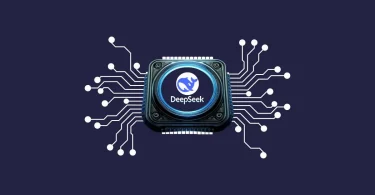This article focuses on the world of AI tools designed for writing emails, revealing their features, advantages and possible limitations.
The introduction of AI-based email writing software has revolutionized the productivity and innovation in email communication, especially for marketers. Here we discuss the benefits of using these tools, focusing on their time-saving features, preserving brand consistency and improving response efficiency. For practicality, the study narrows down to one of the most prominent AI email writing tools, Jasper and its main features and uses. The article ends with thoughts about manual proofreading and the role of human intervention in making AI-generated email content effective.
AI Email Writing Tools:
The use of generative AI in email writing has become a popular trend, enabling users to simplify the process and produce engaging content.
AI email writing tools use artificial intelligence and machine learning to write different kinds of emails. These tools are indispensable for marketers as they speed up the process of writing emails and enable the inexperienced to create impressive pieces for customers and prospects.
Importantly, some of the tools meet general writing needs with specific email functionality, while others are focused on individualized outreach and marketing.
Benefits of Using AI Email Writing Tools:
- Time Efficiency: AI email writers use complex algorithms to process large amounts of data, which saves considerable time of the user.
- Consistent Branding: Such tools allow for a consistent email tone and style based on the user’s brand image.
- Personalization: The main AI email writing tool features are customized greetings, signatures and content according to each recipient’s treatment based on their data.
- Efficiency in Email Responses: AI email writers give content-related recommendations to focus on the most urgent emails and increase overall responsiveness.
Considerations and Potential Drawbacks:
Although AI email writing tools provide significant advantages, it is essential to note the possible shortcomings.
The two main challenges are that AI-generated content does not have empathy and neither can it decipher the emotional implications of a sender’s message in customer service. Users may also fail to pick the non-verbal signals in the email content. Thus, manual proofreading, review and corrections prior to dispatch are important for reducing these constraints.
Best AI-driven Email Writing Tools:
- Jasper:
Jasper stands out as a widely acclaimed AI-driven writing tool, offering numerous functionalities for the creation of emails.
Some of its features are Chrome Extension that powers smooth email responses, different types of templates, language support including several document formats, and content improver to assist in initial content rewriting or refining. The tool works with personalized cold emails, subject lines and persuasive bullet points users can create elaborate messages meant to serve different needs.
- Hypotenuse AI:
Hypotenuse AI is an algorithm email writing tool for beginners, freelancers and people filling in job applications or brand outreach. With the ability to support more than twenty-eight languages, the tool uses a chatbot called HypoChat that helps users in writing emails.
Notable features are email copy templates, configurable brand tones support for multiple languages export options in PDF Docx or Txt, and the built-in plagiarism checker. The emphasis is placed on the tool’s accessibility as it has a user-friendly interface that enables users to enter details including the purpose of email, keywords, and tone aimed at target audience and brand. However, the built-in editor allows further customization and users are allowed to edit or rewrite generated content. Hypotenuse AI provides a free 7-day trial that is limited, and paid subscriptions begin at $15/month.
- ChatGPT:
ChatGPT for Gmail is a plug-in that allows effortless integration with Gmail and makes use of the abilities offered by the ChatGpt Language model. This tool helps unlikely authors with suggestions for prompts. It improves the process of composing emails by creating replies using keywords from a selection of prompts and offering its services to Gmail users only. In contrast with the free plan provided by the tool, access to ChatGPT requires a paid account. Constrained with Gmail, it may not be appropriate for users who use other email providers.
- WriteMyEmail:
WriteMyEmail is a web application that helps users create emails that are readable and brief. The tool works well with desktop email clients that provide different templates when drafting emails, replies or follow-ups. The complimentary plan is designed for individual usage, providing a restriction of 2000 words monthly. The Pro plan costs $5.50/month and boosts the limit to 200 emails for $55, the Ultimate Plan provides extended templates and higher limits for cold emails or copies.
- AI Email Writer:
As one of the Google Workspace add-ons, AI Email Writer works well with Gmail. This plug-in streamlines the email writing process by offering tone selection, statement delivery in a few words and language choice. The tool produces content and opens a draft mail with completed fields. The free plan, which supports 25 languages and includes 10 credits represents a proof of concept for users to understand its actual capabilities.
- Addy AI:
The essence of Addy AI lies in its intuitive integration with Gmail and Outlook. By capturing user input, it produces entire emails with signatures in a single click. Enables users to set default tone, language, length of response and personalization options that do not require constant adjustments each time the user composes an email. Although it works smoothly with Gmail and Outlook, other email customers can use Addy AI manually by copying input and output. The free version of Addy AI allows three emails per day and the paid versions start at $6.99 per month.
- GMPlus:
GMPlus utilizes OpenAI’s GPT model to enable email writing, having more than 50 ready-made prompts for different types of emails. Users can choose prompts or create their own, specifying tone, language and the number of words in emails. The free plan is limited to five queries per day, while a paid monthly subscription of $9.90 increases the query limit. Moreover, a premium subscription of $16.90 per month provides access to the GPT-4 model, which improves the capabilities of this extension.
- Sendr AI:
Sendr AI is a Chrome extension that targets Gmail users and provides an easy way of composing emails with the help of GPT.
The extension creates a button adjacent to the Send button and requests users to enter “the gist of the email.” It then converts the input into a professional email with its subject line. Sendr AI requests authorization to utilize the most recent email within a thread when responding to emails, streamlining the communication process. Users can send 1000 free emails per month using Sendr AI, with further packages available on request.
Summary:
With the help of AI-driven email writing tools, communication is being transformed as marketers and individuals alike can now write compelling, concise and personalized emails faster than ever. The use of such tools has become a necessity for anyone dealing with an overfilled inbox because they provide benefits like time-saving, brand consistency maintenance and personalization. However, AI cannot replace the human touch. Although tools such as Jasper, Hypotenuse AI and Write My Email help streamline the process and offer powerful wording suggestions, manual proofreading and tailoring are still crucial. Humans are best at understanding and communicating empathy, “emotional intelligence”, and “non-verbal cues”. The future of AI email writing includes smooth integration with current platforms, advanced personalization opportunities and solid fact-checking tools. By treating AI as an indispensable aid, not a substitute, we can make full use of it in writing emails that are not only productive but also meaningful and evocative. The future of email is a combination of humans and AI, where technology enhances creativity and makes deeper connections. Thus, pick up your preferred AI tool but don’t forget that a human touch is needed; the two together can make your emails sparkle.




Leave a Comment